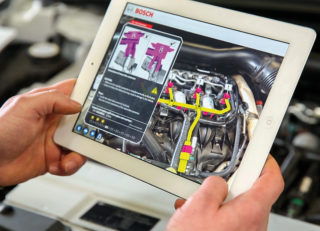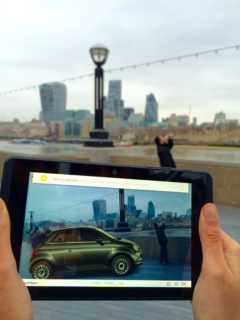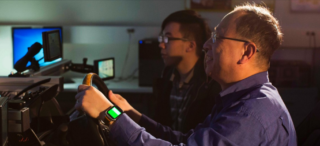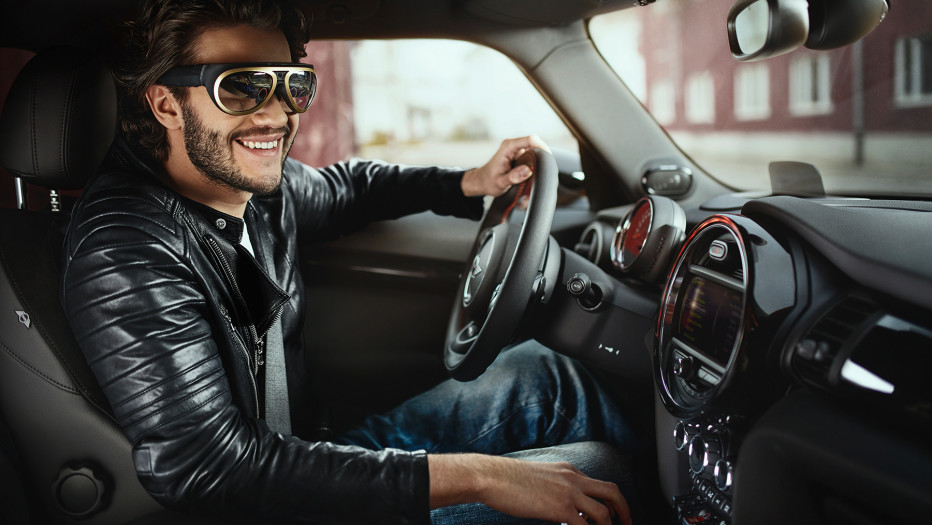The phenomenon of Pokémon GO has catapulted augmented reality into the mainstream conversation over the last week, but—news flash—the proliferation of AR applications across a wide spectrum of industries has been on a progressive path for quite some time.
The auto industry is just one specific sector that’s been successfully using AR in its favor. Brands like Hyundai, Volvo and Jaguar, among a slew of others, have proved that marketing in AR is not just a flavor of the week, but a consistent strategy worth investing and establishing. It’s all part of an immersive plan that mirrors what most manufactures are doing with virtual reality—which has also had a sizable uptick in activations thanks to forward-thinking manufacturers.
“As a marketing tool, VR and AR have potential to give people an experience without physically having to be in the vehicle. It will give an opportunity to take your product and make it accessible to more people in their own environment and own time,” Eric Watson, Mazda’s marketing director, told [a]listdaily. “You’re able to change the color of car, go into the interior and really get an immersive experience. Eventually, someone will want to go to the showroom to have a one-on-one experience with the car.”

In an interview with [a]listdaily, Juergen Lumera, Bosch Automotive’s director of global product management and innovation, said that applying AR to simple components like the owner’s manual is a popular marketing tactic, too.
“It explains the car more, and all of the accessories. If I have a complex vehicle, I need to know how to operate it,” Lumera said. “The application can show what each feature is capable of. It will enrich an experience and make the complex situations easier to understand. People will use it, but not day-in, and day-out.”
Hyundai, for one, built an owner’s manual app in AR called the Virtual Guide to make the lives of their owners simpler earlier this year.
AR is also one of the rare technologies that can really make a change in the way service technicians receive information, Lumera noted. Last year, Bosch Automotive officially authored a system to ease the creation of AR solutions with a large volume of data and deliver information after the sale. The frameworks of the application allows the production of content, and the publishing of it thereafter for service technicians.
“So far, it’s separated between training and the information in the workshop. We believe those two things will grow together to train on-demand,” says the Germany-based Lumera, noting that that Europe was the place where AR was mostly born and cultured over the years. “European car brands really invested a lot of time and money to develop the technology.”
Bosch Automotive applies AR with almost every carmaker across the continent, and they are slowly seeing stateside adoption, too.
Can Cars And AR Be Marketing Magic?

AR can also help you buy your next car, as evidenced by Volvo’s partnership with Microsoft HoloLens. Their union adds another immersive wrinkle in the changing world of customized commerce and showrooming, specifically leading to new sales opportunities for car makers to maximize.
According to Bloomberg, U.S. dealers spend $2.75 billion annually on interest to keep new vehicles on their lots. To make showrooms look less like a bag of Skittles, dealerships are introducing VR and AR for consumers to reimagine the car-buying experience—and for them to save on some overhead.
Fiat Chrysler followed in Volvo’s footsteps in a similar fashion earlier this year at Mobile World Congress by showcasing a new car sales app that uses AR and allows customers to modify features in a car before they buy it.
Ditto for Ford. In January, they debuted a customer-focused experiment involving AR optics and the dealership experience where customers could wear smart glasses as they guide themselves through a showroom.
Meanwhile, MINI’s AR glasses allow drivers to see through the body of their car.
And as if the likes of Porsche, Ferrari, Land Rover and Mercedes-Benz had a hard time unloading their line of supercars, they too have joined long list of brands using AR tech sorcery to modify their respective models in recent years.
Though, the AR sensation is not limited to global powerhouses. It’s also made its way to startups, as evidenced by Swiss company WayRay’s product “Navion,” which is designed to improve driver safety and adaptability by using holographics to project GPS imagery and driver notifications onto the windshield of a car.

Jaguar made it to the windshield by way of an AR concept that provides drivers with an interactive “virtual windscreen concept” display.
On last week’s episode of [a]live, Noah Eichen and Matt Bretz, both of whom are creative directors at the Ayzenberg Group, discussed the potential behind virtual, augmented and mixed realities in a wide ranging conversation.
“It will take time for all these technologies to sort themselves out, and figure out which brand and device rises to fore,” Bretz said. “And there will be ones that we don’t even envision now that come forward to be the successful iteration of it.”
Follow Manouk Akopyan on Twitter @Manouk_Akopyan

